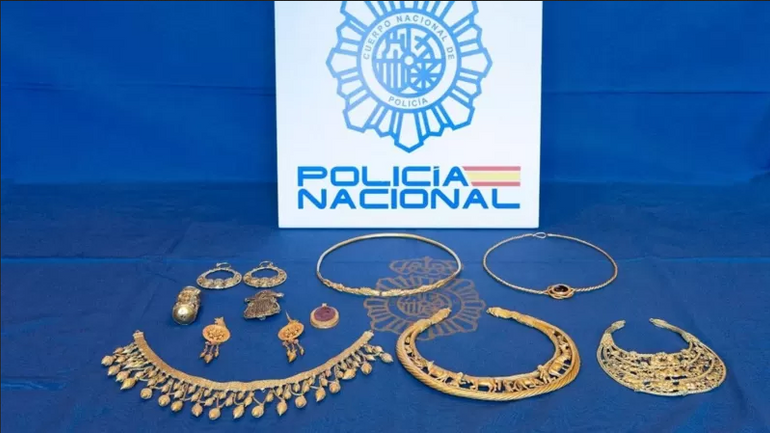Stolen Scythian Gold confiscated in Spain with a mention of the UOC-MP

The police disclosed that 11 ancient gold artifacts were taken from Ukraine in 2016, intending to sell them in Spain. Bracelets, necklaces, and earrings dating from the VIII to IV centuries BCE were accompanied by forged documents asserting their affiliation with the Ukrainian Orthodox Church-Moscow Patriarchate (UOC-MP), according to BBC News Ukraine.
The Spanish authorities arrested five individuals (three Spanish citizens and two Ukrainians), effectively dismantling the criminal network involved in exporting cultural treasures from Ukraine.
The confiscated items, which hold significant historical and economic value, were stolen and illegally transported with the intention of selling them in Madrid.
The artifacts, unsuitable for legal auctioning, were included in the assets of various commercial companies specifically established to give them a legitimate appearance, thus facilitating their commercialization by a group of investors, as per the police statement.
To legitimize the origins of these ornaments, documents in Ukrainian, English, and Spanish were added, confirming their affiliation with the UOC-MP. The culprits assigned the right to manage the artifacts to the main suspect, an Orthodox priest residing in Madrid.
In response to this development, Metropolitan Klyment, the head of the Synodal Information Department of the UOC-MP, stated that there is no UOC-MP parish in Madrid, and their priests do not live there. Since the police report lacks names and photos, further information cannot be provided.
However, the Ecumenical Patriarchate, which has Ukrainian priests in Madrid, indicated that its clergy are not involved in this criminal case, as reported by BBC Ukraine.
The first artifact was seized by investigators in 2021, a golden belt featuring ram heads, which the main suspect sold to a Madrid businessman. It was from this moment, and after the police's persistent efforts, that agents confirmed the involvement of the suspects in handling other items with similar characteristics.
Collaboration with the Security Service of Ukraine enabled the tracking of the confiscated belt and several other exhibits presented at an exhibition in Kyiv, held between 2009 and 2013.
All these items, representing Scythian culture from the VIII to IV centuries BCE, are under study at Spain's National Archaeological Museum and the Cultural Heritage Institute.









